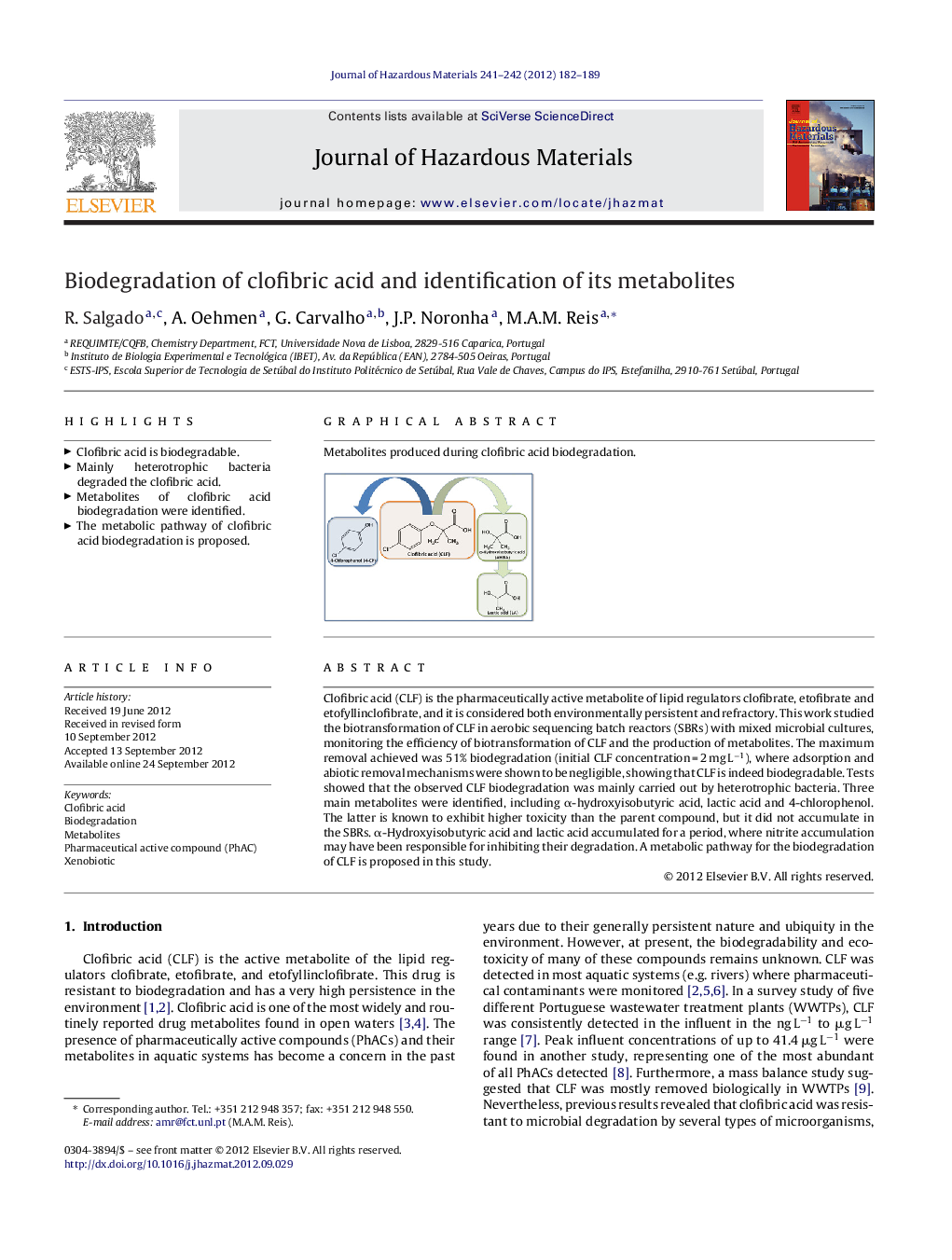| Article ID | Journal | Published Year | Pages | File Type |
|---|---|---|---|---|
| 577642 | Journal of Hazardous Materials | 2012 | 8 Pages |
Clofibric acid (CLF) is the pharmaceutically active metabolite of lipid regulators clofibrate, etofibrate and etofyllinclofibrate, and it is considered both environmentally persistent and refractory. This work studied the biotransformation of CLF in aerobic sequencing batch reactors (SBRs) with mixed microbial cultures, monitoring the efficiency of biotransformation of CLF and the production of metabolites. The maximum removal achieved was 51% biodegradation (initial CLF concentration = 2 mg L−1), where adsorption and abiotic removal mechanisms were shown to be negligible, showing that CLF is indeed biodegradable. Tests showed that the observed CLF biodegradation was mainly carried out by heterotrophic bacteria. Three main metabolites were identified, including α-hydroxyisobutyric acid, lactic acid and 4-chlorophenol. The latter is known to exhibit higher toxicity than the parent compound, but it did not accumulate in the SBRs. α-Hydroxyisobutyric acid and lactic acid accumulated for a period, where nitrite accumulation may have been responsible for inhibiting their degradation. A metabolic pathway for the biodegradation of CLF is proposed in this study.
Graphical abstractMetabolites produced during clofibric acid biodegradation.Figure optionsDownload full-size imageDownload as PowerPoint slideHighlights► Clofibric acid is biodegradable. ► Mainly heterotrophic bacteria degraded the clofibric acid. ► Metabolites of clofibric acid biodegradation were identified. ► The metabolic pathway of clofibric acid biodegradation is proposed.
